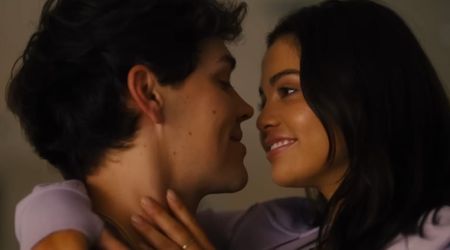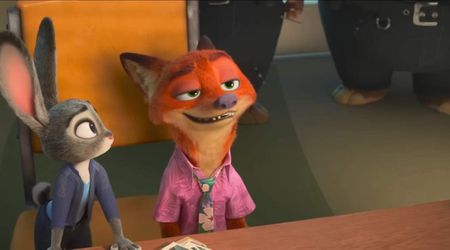'The Aeronauts': From exhilaration to fear to calmness, this 19th century adventure hinges on extended moments

Contains spoilers for 'The Aeronauts'
At nearly 37,000 feet above sea level, up in the skies, well above the clouds, everything was quiet. At one end of the hot-air balloon, lay James Glaisher (Eddie Redmayne), hypoxic, almost frozen, unconscious. On the other end, Amelia Wren (Felicity Jones) was unwilling to give up. The balloon’s valve was frozen shut. But she had a different plan.
She scaled the side of the balloon, hanging on the frozen ropes on its sides with her arms -- her fingers were bruised and bloody. Shivering, she scaled on, almost losing her grip. It was an extraordinary moment. A fall from that height meant certain death. But it wasn’t death that was scary. It was the fall.
Somehow, she moved on, fighting her body, fighting the cold, fighting gravity. She reached the summit of the balloon and with her shoe, kept the upper valve open so that the hot air could escape. So that they could descend. At that moment, she blacked out. As the balloon lost pressure, her unconscious body slid off the side. A fraction of a second before she fell, she regained consciousness. The last thing one heard before the screen turned black was the sickening screech of a taut rope struggling to hold something heavy.
This scene that stretched over a few minutes was a moment of beauty, tension, and fear. And that’s what ‘The Aeronauts’ is made of. Many awe-inspiring moments of pure fear, exhilaration, catharsis, and joy. Directed by Tom Harper and written by Jack Thorne, ‘The Aeronauts’ is by no means a perfect film. Semi-biographical in nature, it tells the tale of a duo that dared to soar for the skies in the 19th century, in pursuit of knowledge. The film documents the few short hours (that felt like a lifetime) of this perilous journey, intercut with the past events that led to it.
The story is not one that can be called by any standards, as bad or even mediocre. But it is not the story that has an impact on the viewer, the moments do.
There is a scene in the film, as the two ascend upwards into the clouds, Jones recites a section of the poem ‘The Fate of the Butterflie’ by sixteenth-century poet Edmund Spenser: “What more felicitie can fall to creature/ Than to enjoy delight with libertie/ And to be lord of all the workes of Nature/ To raine in th’ aire from earth to highest skie/To feed on flowres and weeds of glorious feature/ To take what ever thing doth please the eie/ Who rests not pleased with such happines/ Well worthie he to taste of wretchednes.”
This is followed by perhaps the most beautiful scene -- moment -- in the film. The duo is surrounded by a swarm of butterflies, high above the clouds. Their joy in that scene is soon met with yet another defining moment soon afterward. As they fly into a raincloud, the whole vessel lurches so bad that they almost fall. Even on a small screen, the impact of this one scene cannot be understated. It triggers a visceral kind of fear that has seldom been recreated in adventure or disaster films.
It is, without a doubt, the sum of these moments that make the film what it is.
Of course, the acting is splendid as well. Eddie Redmayne is impeccable as ever. In a 2017 video essay, culture critic Jonathan McIntosh had described Redmayne’s being as a “refreshingly atypical form of masculinity,” adding, “His is a quiet, vulnerable, yet confident form of manhood.” In ‘The Aeronauts’, as in many other roles that Redmayne has played, this description holds true. But the real star of the film is Felicity Jones. Her character shows fear, vulnerability, heart and even humor in the most fantastic of manners.
There aren’t a lot of movies that make you feel sad because they end. It is even less so for adventure films. But ‘The Aeronauts’ only makes you wish their journey to where no human had reached before lasted a little more. Perhaps, just another moment.
‘The Aeronauts’ is available for viewing on Amazon Prime Video.










